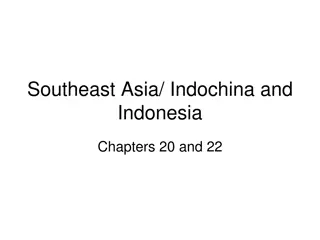Exploring the Rich History and Geography of the Sultanate of Oman
Discover the ancient civilization of Oman, dating back to the eighth millennium BC, through its varied historical names and geographical features. Learn about the diverse landscapes, climate variations, and the significant role of Oman's location in shaping its culture and history.
Download Presentation

Please find below an Image/Link to download the presentation.
The content on the website is provided AS IS for your information and personal use only. It may not be sold, licensed, or shared on other websites without obtaining consent from the author. Download presentation by click this link. If you encounter any issues during the download, it is possible that the publisher has removed the file from their server.
E N D
Presentation Transcript
SULTANATE OF OMAN SULTANATE OF OMAN
he country s names have varied throughout the ages, as it was called in the past by many and varied names, each of which carries a historical record of civilization, achievement and prosperity. Oman and its history:
Oman is ancient civilization he beginning of the civilization of the Omani state dates back to the eighth millennium BC, and according to biological research, the Sultanate of Oman was previously called the Majan civilization, which was famous for its historical location among countries, and the shipbuilding, which is the land of copper according to the Sumerian books, and after that came Mazoon, which indicated the abundance of water in the past, Then it came in the name of Oman, in reference to a region in Yemen that was called Oman. It was taken by immigrants from Yemen after the collapse of the Ma rib Dam and their formation of Oman s civilization.
Geographical location of Oman he Sultanate of Oman is located in Western Asia, in the far southeast of the Arabian Peninsula, where its coast extends for a distance of 3,165 km from the Strait of Hormuz in the north to Yemen. The Emirates, the Republic of Yemen to the south, the Strait of Hormuz to the north, and the Arabian Sea to the east.
The area of the sultanate of Oman he Sultanate occupies the third rank in the Arabian Peninsula, with a total area of about 309.5 thousand square kilometers. It is also characterized by the different nature of its lands. The plain governorates occupy 3% of the Sultanate s area, while the mountainous governorates occupy an area of approximately 15% of the territory of the Sultanate of Oman, while the valleys and desert governorates It represents about 82% of the Sultanate's area.
The climate of the Sultanate of Oman he geographical location occupied by the Sultanate plays an important role in influencing its climate, as climatic conditions vary between different regions of the Sultanate of Oman, where it is hot and humid on the coasts, and hot and dry in the interior areas, while the mountainous heights witness a moderate and rainy climate, and in the south the climate is tropical seasonal , where it begins with heavy summer rains in June and continues to September, and as a result of the diversity of climatic manifestations in Oman, the crops vary and the agricultural crops differ.
Economy of the Sultanate of Oman he Sultanate is characterized by its diversified economy, as the Sultanate possesses various underground resources such as oil and gas, as well as flourishing in trade and agriculture, so that its economy is of middle income, and oil constitutes more than half of total exports and an important factor in revenues, and the Sultanate owns more than five billion barrels of oil reserves.
Surface manifestations in the Sultanate of Oman he Sultanate has many islands, and it also contains many single mountains, and mountain chains, such as the Al Hajar Mountains, which reach a height of more than 3,000 meters, and Jabal Al Shams, which reaches a height of 1800 meters in the Jabal Al Akhdar region, in addition to the Al Batinah Beach, which results from the valleys. descending from the mountains, as well as the Dhahirah region, which is located on the other side of the mountain.

























